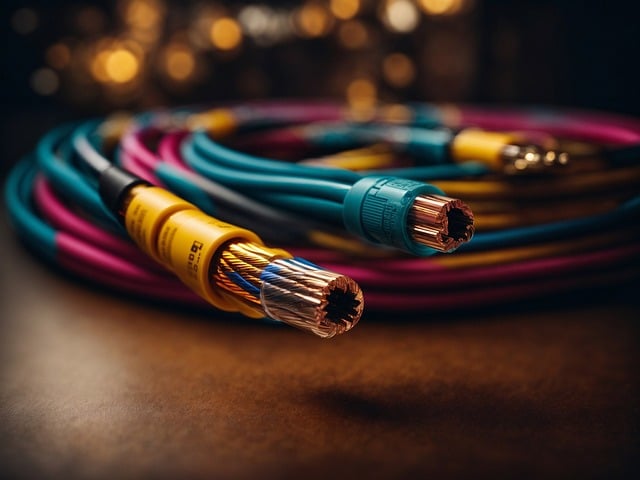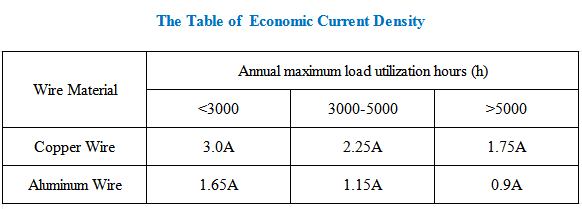How To Select Cable Cross-Sectional Area?
 Jul 29,2024
Jul 29,2024

 Suke
Suke
When it comes to cable, everyone is very familiar with it, but if it comes to the choice of cable cross-sectional area, many people may be in the clouds, especially for some electrical beginners. We all know that cable generally refers to a cable similar to a rope twisted by several or several groups of wires (each group of at least two); each group of wires is insulated from each other and often twisted around a center; and the entire outer bun has a highly insulated covering layer. As an electrical energy or signal transmission device, cable is one of the most used devices in electricity. There are five types of cable, of which power cable in the backbone line of the power system is used to transmit and distribute high-power power cable products, often used in urban underground power grids, power station leading lines, industrial and mining enterprises internal power supply, and underwater transmission lines across the river and sea. So, the question comes: how should the cable cross-sectional area be correctly selected? Today, I will share with you a scientific and simple cable cross-sectional area selection method. In different situations, there are four methods. After reading the article, I hope to give you some references.

Method 1: Select the option based on the long-term allowable carrying capacity
In order to ensure the safety and service life of the cable, the cable temperature after power should not exceed the specified long-term allowable working temperature. The PVC-insulated cable is 70 degrees, and the cross-linked polyethylene-insulated cable is 90 degrees. According to this principle, it is very simple to look up the table to select the cable.
For example:
The transformer capacity of a factory is 2500KVa, using 10KV power supply, if the cross-linked polyethylene insulated cable is laid in the bridge, what is the cross-sectional area of the cable?
Step 1: Calculate rated current 2500/10.5/1.732=137A
Step 2: Check the cable selection manual
YJV-8.7/10KV-3X25 carries 120A
YJV-8.7/10KV-3X35 carries 140A
Step 3: Here, the cable carrying capacity of YJV-8.7/10KV-3X35 is greater than 137A, which can theoretically meet the requirements.
Note: This method does not consider the requirements of dynamic stability and thermal stability
Method 2: Select according to economic current density
Simply understand the economic current density; the cross-sectional area of the cable affects line investment and power loss. In order to save investment, it is hoped that the cable cross-sectional area is smaller; in order to reduce power loss, it is hoped that the cross-sectional area of the cable is larger. Based on the above considerations, a reasonable cable cross-sectional area is determined, which is called the economic cross-sectional area, and the corresponding current density is called the economic current density.
According to the annual operating hours of the equipment, the economic current density was obtained by looking up the table. Unit: A/mm2

For example: the rated current of the equipment is 150A, the annual operation time is 8000 hours, what is the cross-sectional area of the copper core cable?
According to the table above, the economic density is 1.75A/mm2 for 8000 hours
S = 150/1.75 = 85.7 A
Conclusion: We can select a cable cross-sectional area of 95mm2 according to cable specifications
Method 3: Select according to the power grid voltage drop
When we select the cross-sectional area of the cable using the first and second methods, if the cable is very long, a certain voltage drop will be generated during operation and start-up, and the voltage on the equipment side will be lower than a certain range, which will cause the equipment to heat up.
According to the requirements of The Electrical Manual, the voltage drop of 400V line can not be less than 7%, that is, 380V*7%=26.6V, the voltage drop calculation formula (here only consider the pure resistible voltage drop) :
∆U=I*ρ*L/S S=I*ρ*L/∆U
∆U voltage drop; I indicates the rated current of the device; ρ conductor resistivity; S indicates the cable cross-sectional area; L indicates the cable length.
For example:
the rated current of 380V equipment is 150A, the copper core cable (ρ= 0.0175Ωmm2 /m) is used, the voltage drop is less than 7% (∆U=26.6V), the cable length is 600 meters. How large is the cable cross-sectional area S?
According to the formula S=I*ρ*L/∆U=150*0.0175*600/26.6=59.2mm2
Conclusion: The cross-sectional area of the cable is 70mm2.
Method 4: Select according to the thermal stability coefficient
For 0.4KV cable, the general cable can meet the thermal stability requirements; do not use this method to verify.
For cables above 6KV, after selecting the cross-sectional area of the cable by the above method, it is necessary to check whether it meets the thermal stability requirements according to the following formula: If it does not meet the requirements, a larger cross-sectional area should be selected.
Formula: Smin=Id×√Ti/C
Ti is the breaking time of the circuit breaker, 0.25S is taken; C is the thermal stability coefficient of the cable, 80 is taken; Id is the three-phase short-circuit current value of the system.
For examples: when the system short-circuit current is 18KA, how to choose the cable cross-sectional area.
Smin=18000*√0.25/80=112.5
Conclusion: If the short-circuit current of the system reaches 18 KA, the cross-sectional area of the cable should not be less than 120 mm2, even if the rated current of the device is small.

 Home
Home What Is The Difference Between XLPE Cable And PVC Cable?
What Is The Difference Between XLPE Cable And PVC Cable?  You May Also Like
You May Also Like

 Tel
Tel
 Email
Email
 Address
Address














